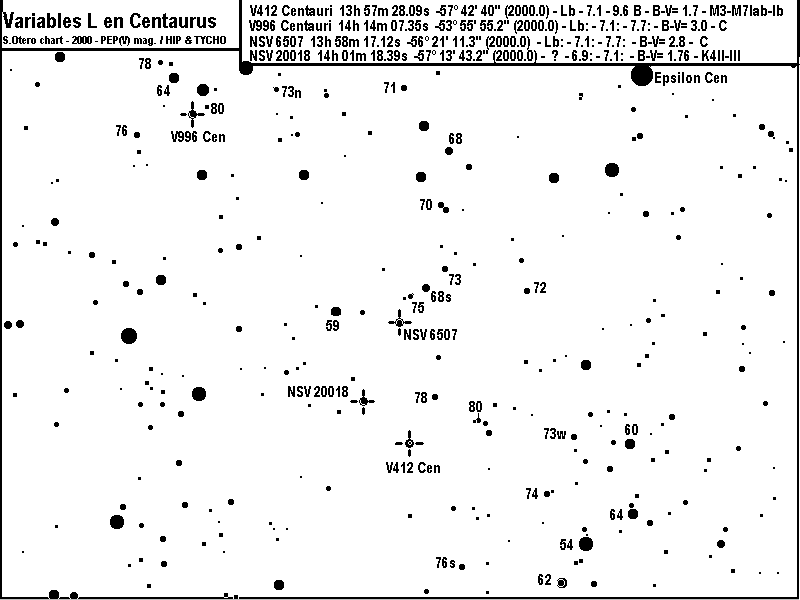 V412 y V996 Cen - NSV 6507 y 20018.gif
V412 y V996 Cen - NSV 6507 y 20018.gif
Dear friends:
The field between beta and epsilon Centauri
in the southern sky is full with "old" and "new" red variables. Some of them
recently discovered by Hipparcos. And some with too low amplitude. At least
during the time Hipparcos measurements were made.
I observe two carbon stars in this area
(NSV 6507 and V996 Centauri) which are varying between 7.1 and 7.7, a very
suitable range for visual observing. On the contrary, the long known
variable V412 Centauri is showing no more than 0.2 mag. variations.
I had chosen HD 122096 as a comparison star
for V412 Cen, but then I found that it was slightly variable: 7.01 - 7.06 V,
according to Hipparcos. However, the only measurement available from the
ground ( Wisse, P.N.J., 1981) is V= 6.93.
I observed the star between march and july
2000 and I found it stable or varying inside my error box a tenth of a
magnitude around 7.1. So Hipparcos was right and I didn't pay more
attention.
But last week I took a look at it and IT WAS
BRIGHTER!. My estimate was almost exactly as that PEP(V) measurement = 6.92.
So the star maybe has a very long period or
its irregular variations can awake from time to time making it interesting.
The amplitude is low but greater than expected so maybe the star gets
brighter than 6.9 some time.
NSV 20018 is HD 122096. It's located 14h 01m 18.39s -5713' 43.2" (2000.0)
Its spectral type is K4II/III and its color index is 1.76 (probably variable
too)
I attach a chart for the four variables.
For AAVSO HQ: please, Harvard designations are needed.
Best regards to all,
Sebasti$Bbp(B Otero (OSE),
Buenos Aires,
Argentina.
PS: Observations will be sent separately
 V412 y V996 Cen - NSV 6507 y 20018.gif
V412 y V996 Cen - NSV 6507 y 20018.gif
 VSNET Home Page
VSNET Home Page  Return to Daisaku Nogami
Return to Daisaku Nogami
